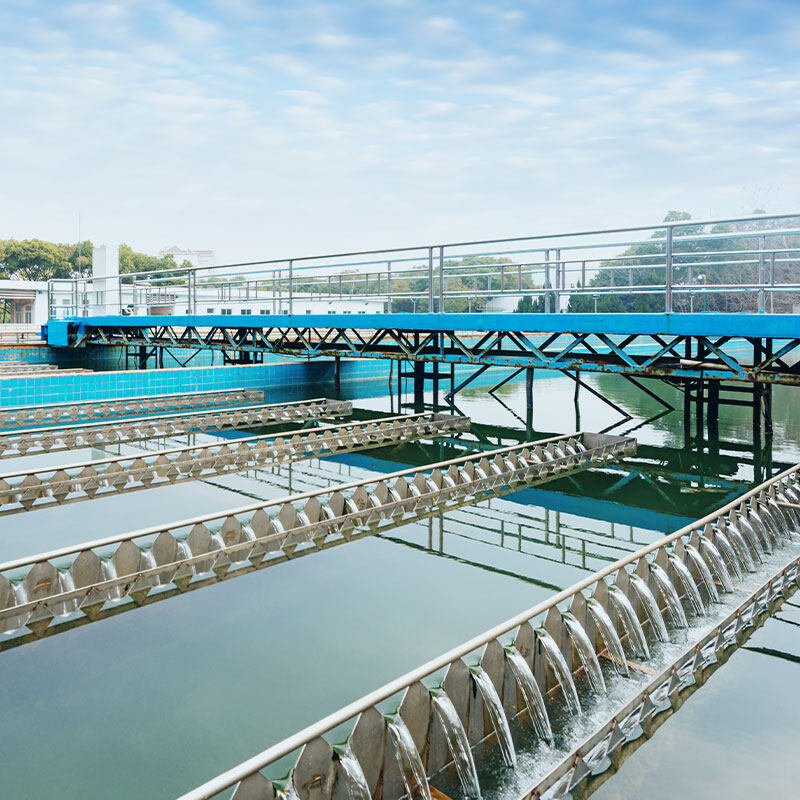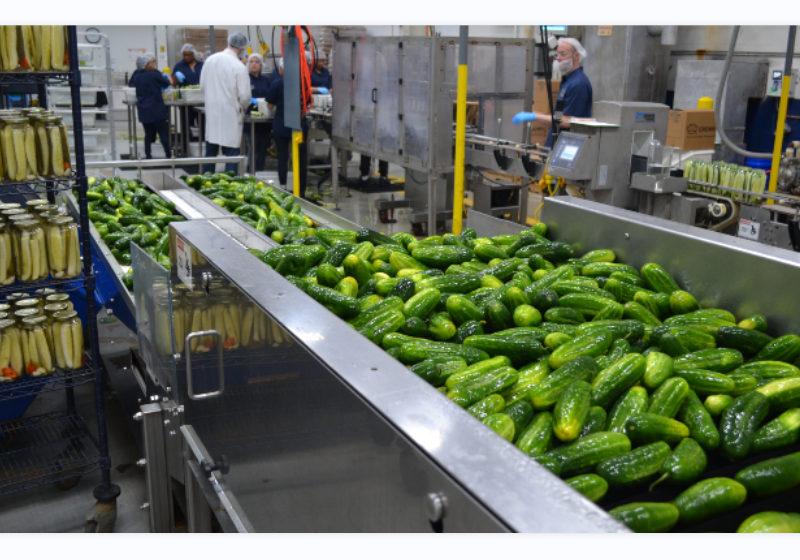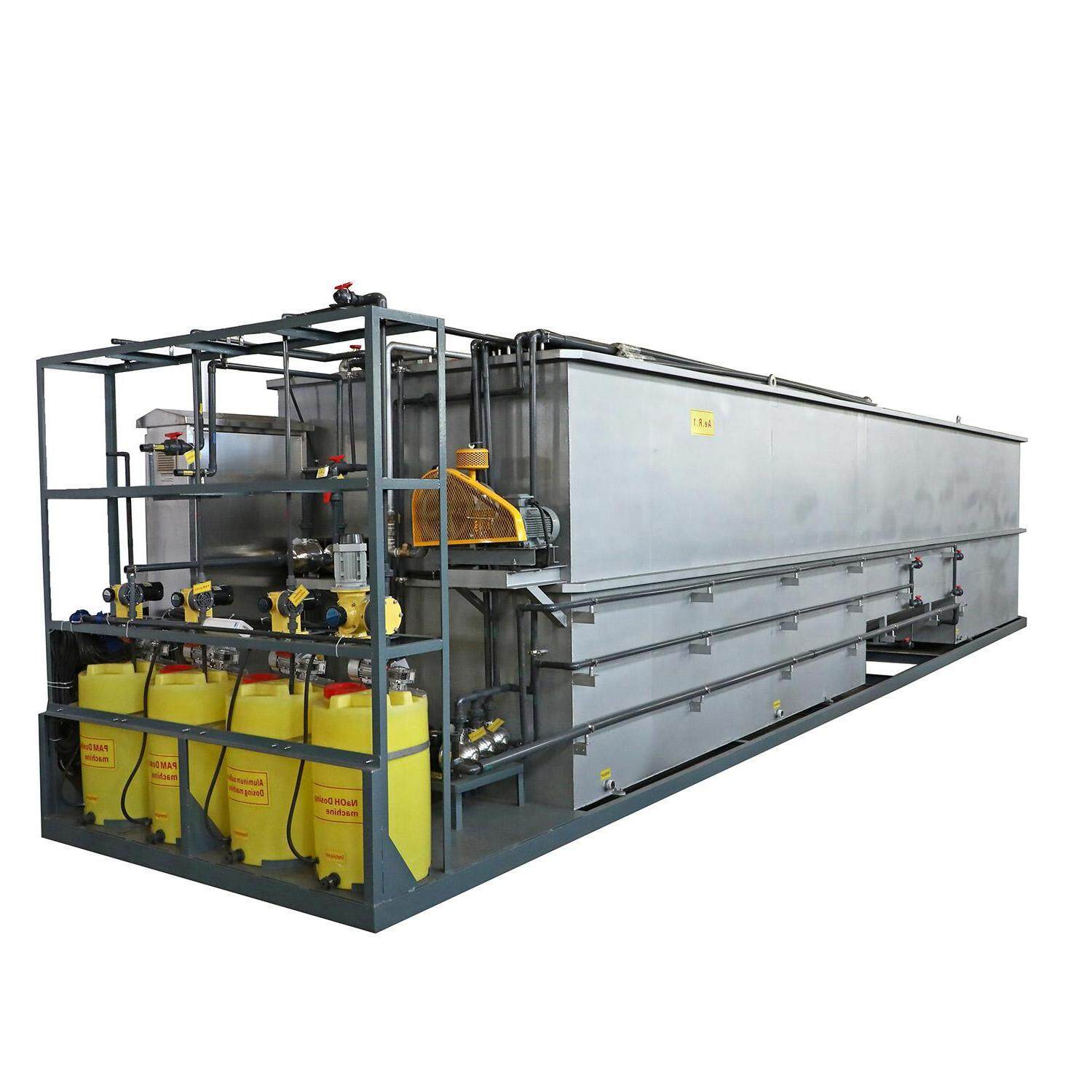Pickle Processing Wastewater
The main process of pickle production is to clean the collected fresh vegetables first (which will produce part of the washing wastewater), then send them to the salting pool for soaking (which will produce part of the wastewater, namely salinized wastewater), and then send them to the vegetable cutter after soaking for about 10 to 20 hours, cut the vegetables into pieces or filaments according to different requirements, and then send them to the dehydration workshop for dehydration (which will produce part of the wastewater, namely desalted wastewater), After dehydration, all kinds of vegetables are mixed and added with various seasonings, and then packed into bags, and then vacuumed and sealed, and the outer packaging is cleaned (which will produce some salty wastewater), and then can be boxed and put into storage.
Pickle Wastewater Source
The main pollutants in pickle wastewater treatment are plant fiber, plant amino acid, organic acid, alcohol, salt, calcium and magnesium and other inorganic elements. It is mainly divided into two categories: one is salted vegetable water, which is discharged every four months, and the discharge amount is small, with high salt content (about 16%), high COD, high NH3-N, and poor biodegradability; Second, the desalted water, cleaning water, flushing water, CODcr, BOD5, SS, etc. in the finishing process seriously exceeded the allowable discharge standards.
Wastewater Treatment Process
Ion exchange process
This process is a desalting process widely used in various industries. It is based on chemical exchange of ion exchange process to complete the desalting of water.
Ion exchange is a unit operation process. In this process, it usually involves the reaction between the ions in the solution and the insoluble polymer. When this method is used for desalting, the wastewater first passes through the cation exchange column, and the positively charged Na+and K+plasma are replaced by H+and remain in the exchange column, and then the negatively charged anions such as Cl - are replaced by OH - to achieve the purpose of desalting.
Membrane separation process
Membrane separation technology is a new separation technology that separates, purifies and concentrates target substances by using the difference of the permeability of each component in the mixture.
Electrodialysis is a relatively common desalination technology. Ultrafiltration and microfiltration can intercept the colloidal COD of solid suspended solids (ss). Reverse osmosis RO is the most effective and commonly used desalination technology. Compared with the above three methods, this method can remove some dissolved organic substances.
For seasonal production, the amount of pickle wastewater fluctuates greatly
In the aerobic unit, the sludge mixing and aeration functions of the aeration system with flexible air volume adjustment are separated to save aeration energy consumption and improve the stable operation of the treatment system
There are 12 kinds of typical wastewater sewage water, including:
- Starch Processing Wastewater
- Juice Processing Wastewater
- Hospital Wastewater Sewage Water
- Dairy/Milk Processing Wastewater
- Beer Processing Wastewater
- Papermaking Processing Wastewater
- Slaughtering Wastewater
- Pickle Processing Wastewater
- Monosodium Glutamate Processing Wastewater
- Beverage Processing Wastewater
- Saponin Processing Wastewater
- Community Domestic Sewage Water
Pickle production includes cleaning, cutting, salting, fermentation, cleaning, packaging, sterilization and other processes. Salinization, cleaning, desalting and dehydration are the main links to produce wastewater, which is characterized by high COD, high NH3-N, high TP and high salinity.
#QDEVU #WATERTREATMENT #WASTEWATERTREATMENT #SEWAGETREATMENT #SEWAGEWATERTREATMENT #BIOLOGICALTREATMENT #ACTIVEDSLUDGE
Visit www.evuchina.com for more informations!




